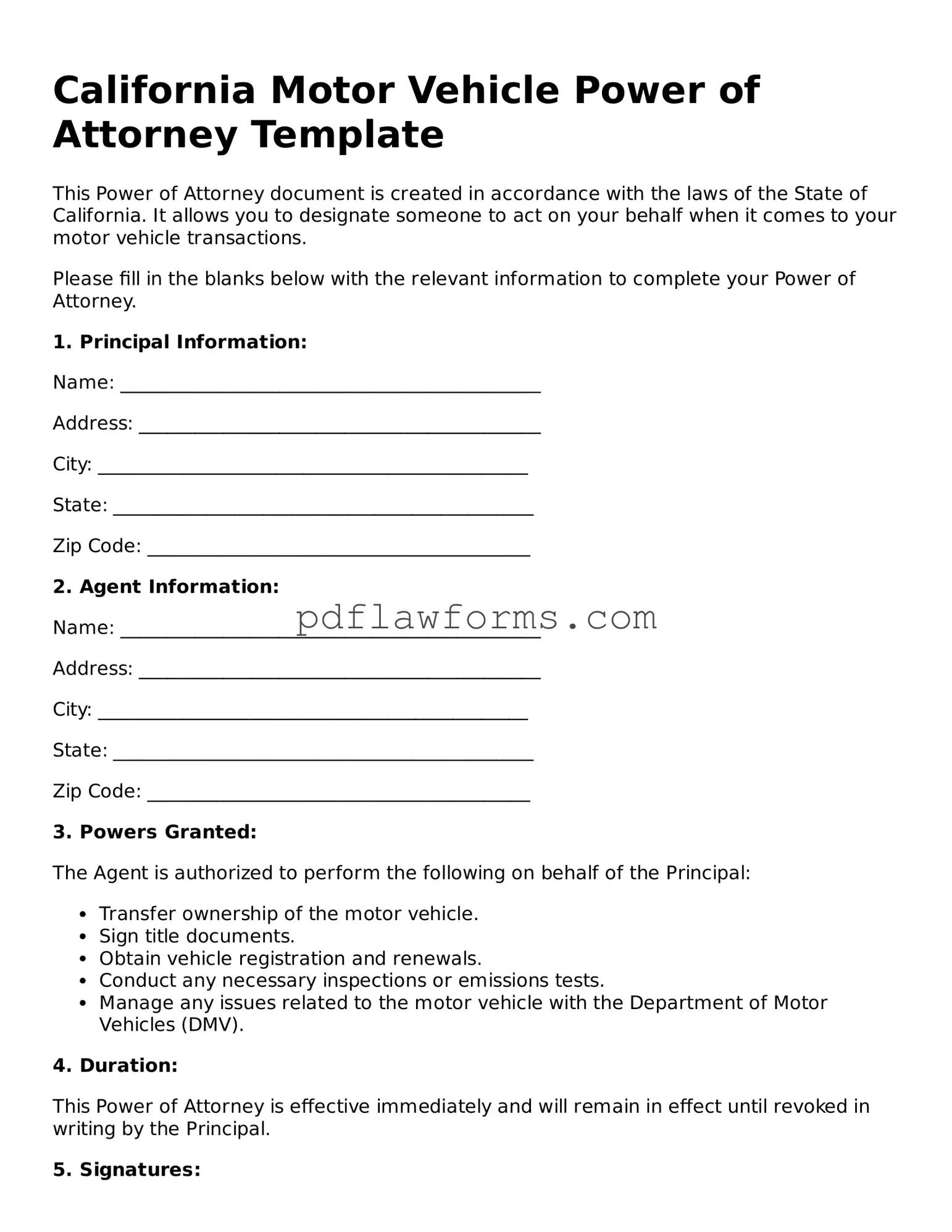Filling out the California Motor Vehicle Power of Attorney form can be straightforward, but mistakes often occur. One common error is not including the correct information for both the principal and the agent. The principal is the person granting authority, while the agent is the individual receiving it. Omitting names, addresses, or other identifying details can lead to confusion and delays in processing.
Another frequent mistake involves failing to sign the form. A signature is essential for validating the document. Without it, the power of attorney may not be recognized by the Department of Motor Vehicles (DMV) or other entities. Additionally, individuals sometimes overlook the requirement for a witness or notary signature, which is necessary in certain circumstances.
People often misinterpret the scope of authority granted in the form. It’s crucial to clearly specify what actions the agent can take on behalf of the principal. General phrases can lead to misunderstandings. For example, stating "handle all vehicle matters" might not be sufficient. Instead, listing specific tasks ensures clarity and prevents potential disputes.
Another mistake is not updating the form when circumstances change. Life events such as divorce or the death of the principal can invalidate the existing power of attorney. Keeping the document current is vital to ensure that the intended authority remains effective.
Some individuals fail to provide a clear expiration date for the power of attorney. Without this detail, the document may remain valid longer than intended, potentially leading to unauthorized actions by the agent. Including an expiration date helps maintain control over the authority granted.
Moreover, people sometimes neglect to discuss the arrangement with the agent beforehand. Open communication is essential to ensure that both parties understand the responsibilities and limitations of the power of attorney. Misunderstandings can create tension and lead to conflicts down the line.
In addition, using outdated forms can be problematic. California may revise its forms periodically, and using an old version could result in rejection by the DMV. Always check for the latest version of the form before filling it out.
Another issue arises when individuals fail to keep copies of the completed form. Retaining a copy is important for both the principal and the agent. It serves as a reference and helps avoid confusion about the powers granted.
Lastly, many overlook the importance of understanding state-specific requirements. California has its own regulations regarding powers of attorney. Familiarizing oneself with these can prevent unnecessary complications. Ensuring compliance with state laws is crucial for the effectiveness of the document.
